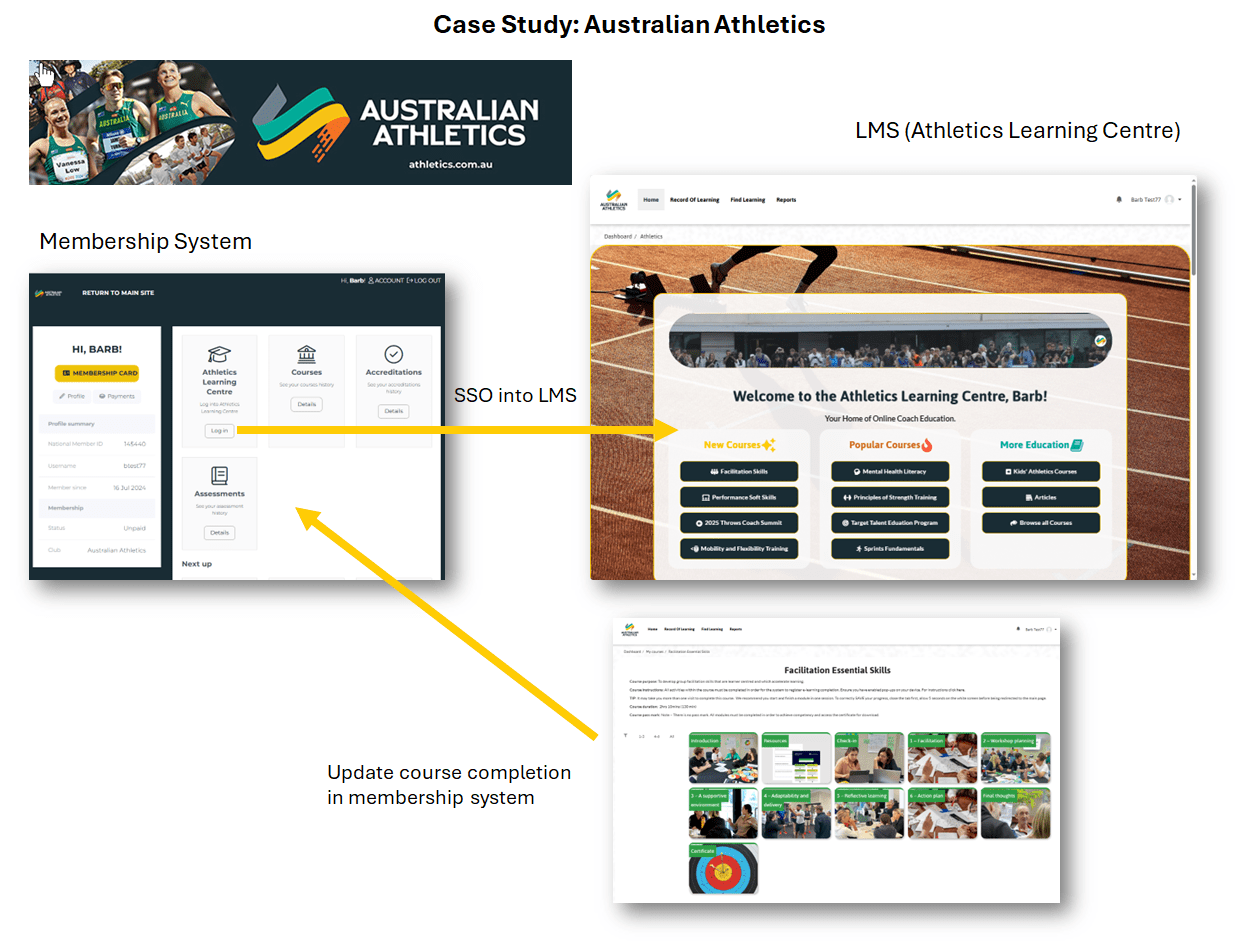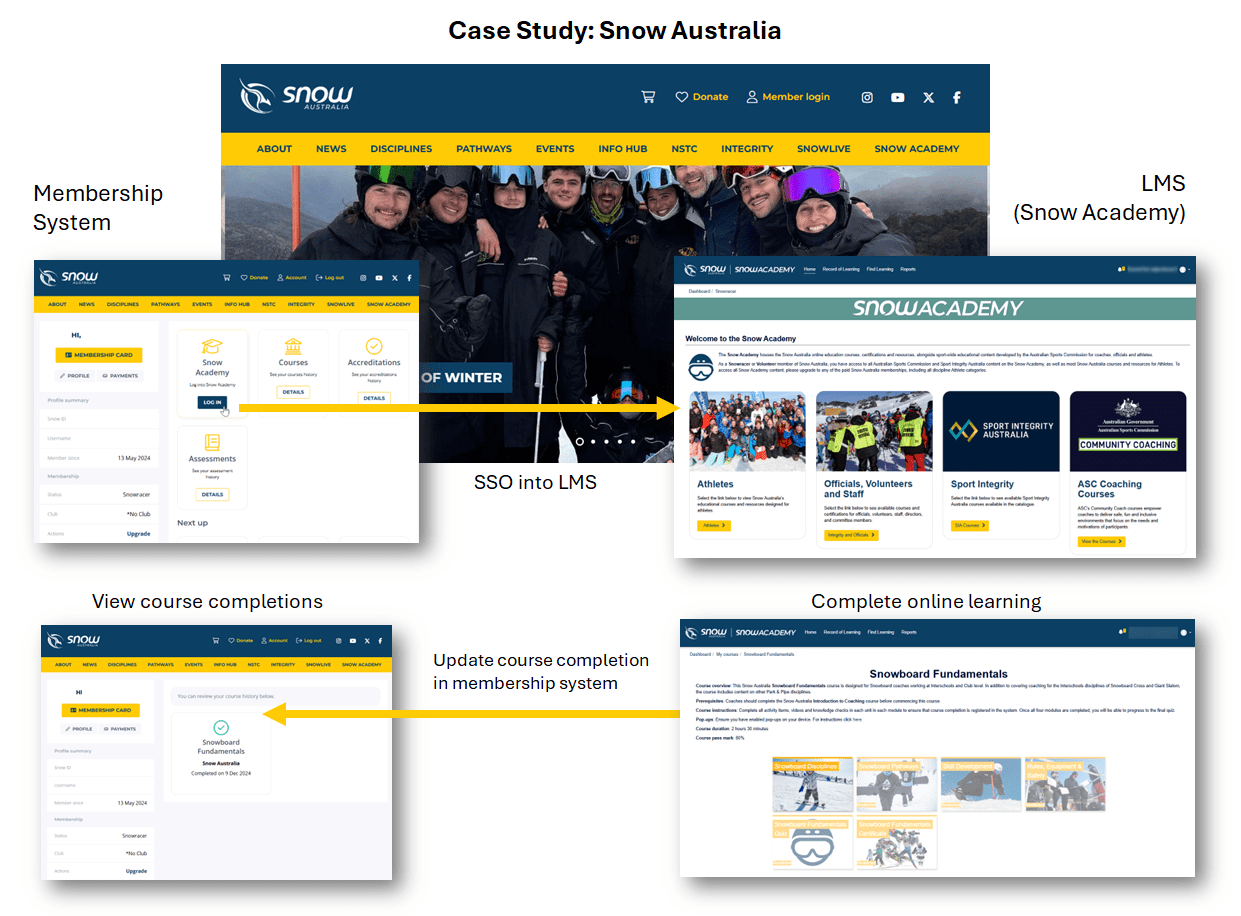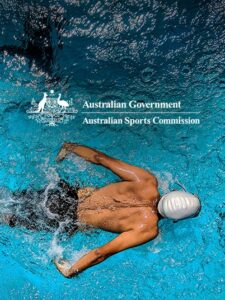The Australian Sports Commission (ASC), a government agency responsible for supporting and investing in sport, works to deliver innovative digital solutions to build capability, connectivity, efficiency, and best practice across the sport sector.
The Challenge
The multitenant Australian Sport Learning Centre (ASLC) currently services over 125,000 active learners, across 24 tenancies, with a strategic intent to reach and educate an estimated 3 million volunteers in the Australian sport sector.
The challenge was to create a connected experience across a very fragmented sport technology ecosystem to create efficiency and improved user experience for learners, whilst simultaneously reducing the administrative overhead for staff of National Sporting Organisations and National Sporting Organisations for People with Disability (collectively NSO/Ds).
To focus on the learner and administrator experiences and challenges, we needed to extend the initial design of our LMS that provides autonomous learning centres for each NSO/D, and target the most significant component of the ecosystem, CRM/membership systems.

Challenge #1: Seamless learner access across sport digital platforms
Reduce Sport learner logins to a single login between their NSO/D membership system and their learning account in ASLC.
Challenge #2: Learning Centre data flowing automatically across sport digital platforms
Deliver data integration for learning completed in the ASLC so that a learner/admin can see completed learning in the sport membership system as well.
Challenge #3: Retain financial control in one place
Restricting access to content in tenancies based on purchases made in external sport digital platforms.
The Solution
To solve these challenges, the ASC delivered the following features at tenant level, targeting two membership solutions with significant market share:
1. Single Sign-on (SSO)
Any tenant onboarding with the ASC, with either of the targeted membership solutions can provision SSO to their learners for access to their learning centre.
SSO at tenant level is provisioned through a bespoke OAuth 2.0 integration layer that acts as an IDP between a sport’s membership system and the ASLC.
SSO has reduced the need for learners to have two accounts (one with their sport membership system and one for learning with the ASLC). The LMS becomes a seamless addition to the learner’s sport digital ecosystem.
2. Data integration with membership systems
Data integration is achieved through scheduled reports with SFTP delivery to a process that injects data back into the sport membership systems.
Returning completions to the membership system provides a single point of truth for course and certification completions and allows sports to manage learner credentials in one place. It significantly increases the quality of data, allowing the membership system (CRM) to be retained as the source of truth of all sport data. An example of the benefit is that it allows for the up-to-date certification credentials to drive appropriate selection of coaches/officials for sport matches.
3. Content restriction based on membership system purchases
Learners are automatically added to audiences in ASLC after purchasing content in the membership system. This solution uses Webservice API endpoints to add learners directly into set cohorts (audiences) and restricting content to just these learners.
After purchasing a course/certification in the membership system, learners can SSO into their learning centre and access this restricted content.
Summary of tenant onboarding:
- February 2023: Surfing Australia (SSO, data integration, content restriction)
- September 2023: Water Polo Australia (SSO)
- December 2023: Australian Athletics (SSO and data integration)
- May 2024: Volleyball Australia and Snow Australia (SSO and data integration)
- June 2024: AusTriathlon (SSO, data integration, content restriction) and AusTaekwondo (SSO and data integration)
- March 2025: Australian Sailing (SSO and data integration)

The Results
Solving this challenge has to date, positively impacted the learning journey of almost 18,000 volunteer learners and created significant administrative efficiency for the eight NSO/Ds who have adopted it so far.
A connected digital sector has been a critical and longstanding ASC and sector strategic focus, which this ASC solution has made a strong step forward to effectively and efficiently solve.
This solution has increased the value proposition of the ASLC and contributed to onboarding a further 15 sports across 3 years, with more NSO/Ds lining up to join this revolutionary sector offering.
More than:
- 18,000 active learners have used single sign-on
- 100 courses/programs/certifications are monitored daily for completions to update in the learners’ membership system
- 15,000 completions have been updated in membership systems, keeping certification records up to date, reducing manual handling and human error
- 10,000 audience assignments targeting locked content, reducing manual assignments by administrators
The total ASLC has substantially increased in size between 2022 and 2025:
- 250,000 -> 430,000+ total learners
- 50,000 -> 125,000+ active learners in the past 12 months
- 350 -> 1,000+ courses
The Australian Sports Commission corporate plan has a strategic focus on digital and industry capability building, with numerous outcomes delivered through the Australian Sport Learning Centre. The learning centre team have worked closely and collaboratively with Kineo (with the approval of Totara) to extend core Totara into a simple and fit for purpose solution, maintaining the benefits of shared generic sector learning content throughout multiple certification and accreditation pathways in sport. Our philosophy of building repeatable and scalable features provides benefits to large and small NSO/Ds and supports alignment with our modernisation and standard, yet personalised approach for learning and accreditation across the sector.
Director Australian Sport Learning Centre, Sport Australia







